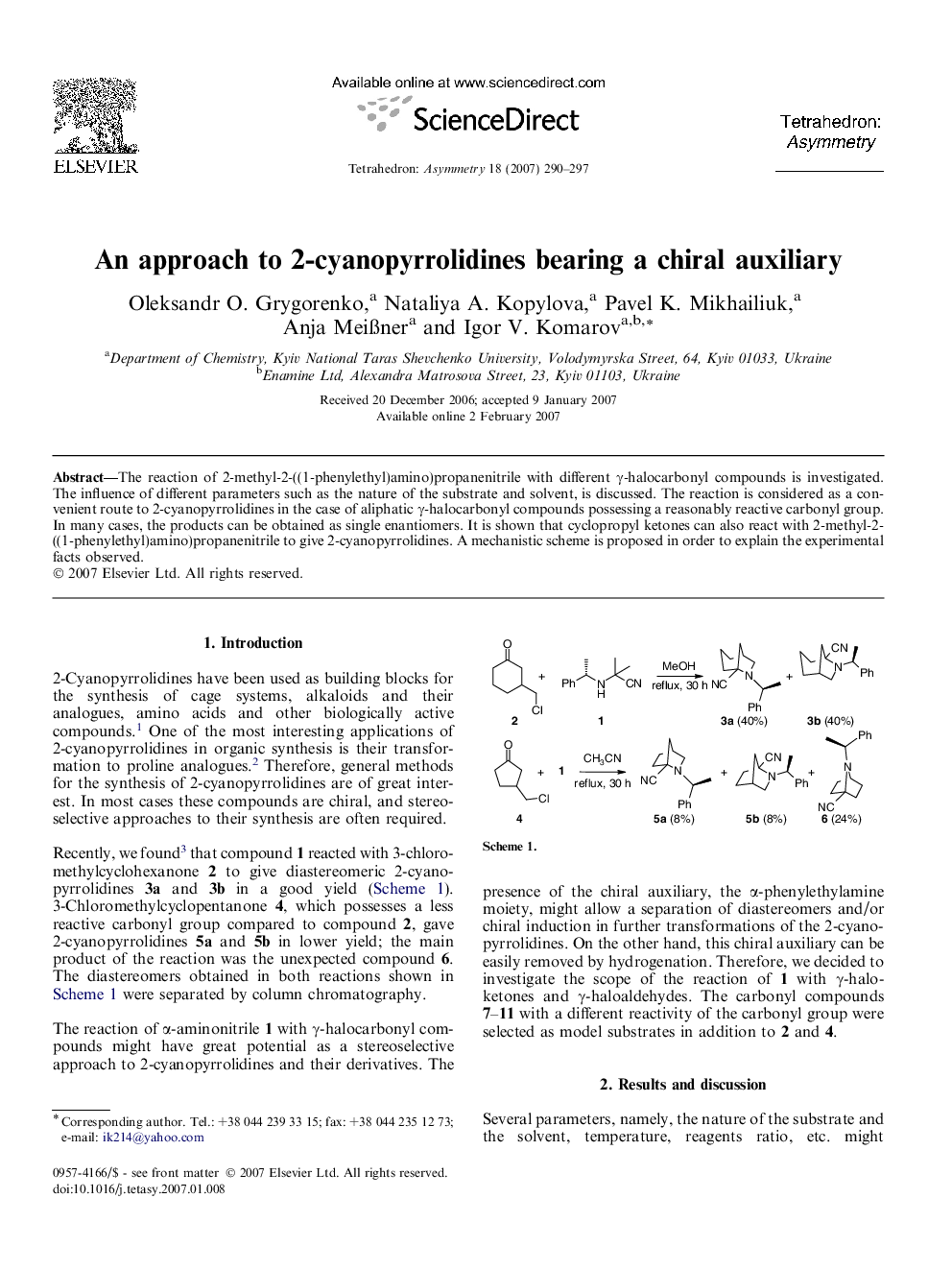| Article ID | Journal | Published Year | Pages | File Type |
|---|---|---|---|---|
| 1345570 | Tetrahedron: Asymmetry | 2007 | 8 Pages |
The reaction of 2-methyl-2-((1-phenylethyl)amino)propanenitrile with different γ-halocarbonyl compounds is investigated. The influence of different parameters such as the nature of the substrate and solvent, is discussed. The reaction is considered as a convenient route to 2-cyanopyrrolidines in the case of aliphatic γ-halocarbonyl compounds possessing a reasonably reactive carbonyl group. In many cases, the products can be obtained as single enantiomers. It is shown that cyclopropyl ketones can also react with 2-methyl-2-((1-phenylethyl)amino)propanenitrile to give 2-cyanopyrrolidines. A mechanistic scheme is proposed in order to explain the experimental facts observed.
Graphical abstractFigure optionsDownload full-size imageDownload as PowerPoint slide
(2S,3R,5R)-3-(Chloromethyl)-5-isopropenyl-2-methylcyclohexanoneEe = 100%[α]D = −18.8 (c 0.41, MeOH)Source of chirality: (R)-carvoneAbsolute configuration: (2S,3R,5R)
(3aR,4S,9R,9aS)-2-(4-Methoxyphenyl)-10-[(1R)-1-phenylethyl]-3a,4,9,9a-tetrahydro-1H-4,9-epiminobenzo[f]isoindole-1,3-dioneEe = 100%[α]D = +88.5 (c 0.87, MeOH)Source of chirality: (R)-α-phenylethylamineAbsolute configuration: (3aR,4S,9R,9aS,1′R)
